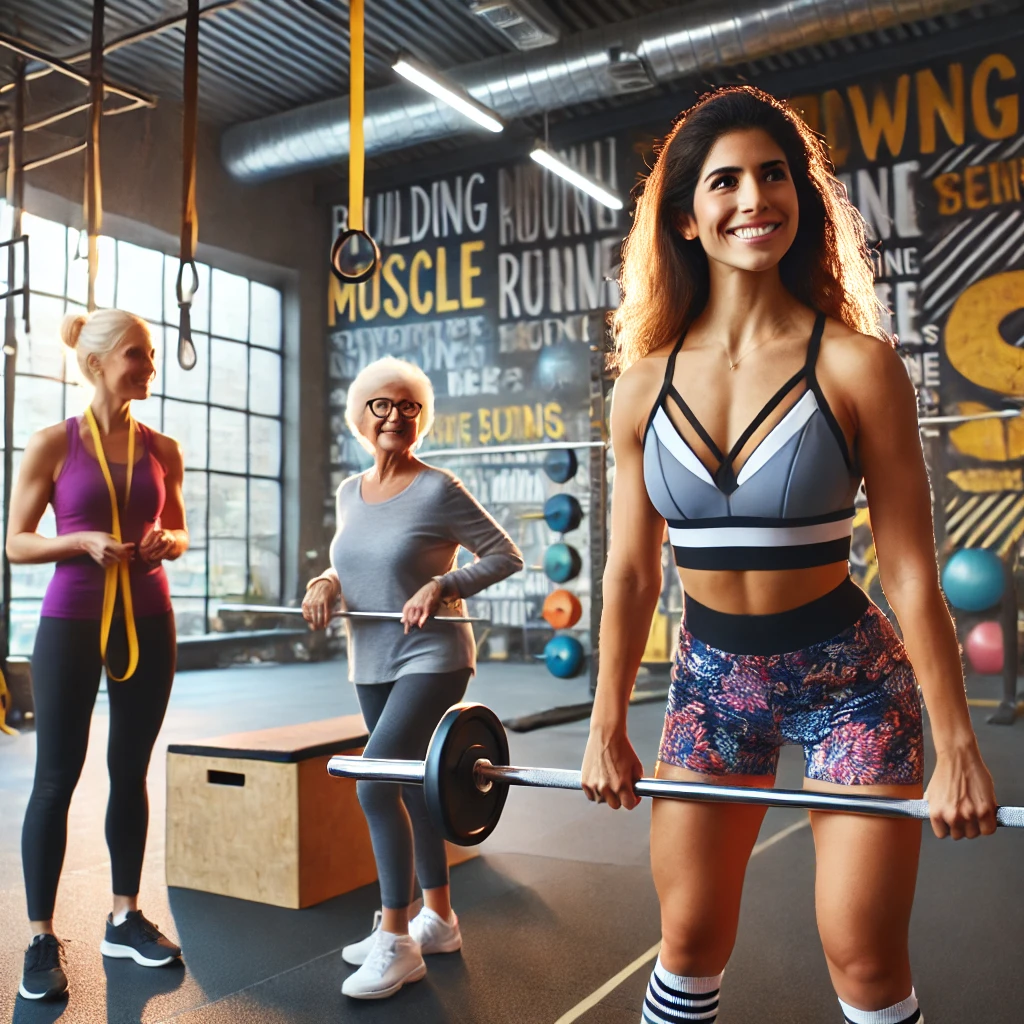Table of Contents
Understanding Your Fitness Goals
Setting clear and achievable fitness goals is a crucial first step in any workout program. These goals provide direction and purpose, allowing individuals to measure their progress and stay motivated throughout their fitness journey. The types of goals can vary widely, encompassing aspects such as weight loss, muscle building, endurance training, and overall health improvement. Each of these goals requires a tailored approach, impacting the choice of exercises, frequency, and intensity of workouts.
For instance, if weight loss is the primary objective, a focus on cardiovascular exercises combined with a calorie-controlled diet may be essential. Alternatively, those aiming for muscle building may concentrate on resistance training while ensuring adequate protein intake to support muscle recovery and growth. Endurance training necessitates a different approach, typically involving longer, consistent workouts that enhance stamina and cardiovascular health. Therefore, identifying one’s personal fitness aspirations is imperative as it directly influences the selection of suitable workout routines.

Moreover, understanding the motivations behind an exercise regime can significantly enhance commitment to achieving goals. Individuals may exercise for various reasons, including improving self-esteem, preparing for a specific event, or simply striving for a healthier lifestyle. A well-defined goal serves as a constant reminder of why the effort is worthwhile, which can help maintain high levels of motivation when faced with challenges. By tailoring workout routines to align with specific fitness goals, individuals can optimize their efforts and enhance their results.
In conclusion, having a clear idea of fitness aspirations, whether it be for weight loss, muscle building, or overall health improvement, is essential. This clarity not only directs the choice of workouts but also sustains motivation and commitment, ultimately leading to success in achieving those goals.
Types of Workout Routines for Women
When it comes to achieving fitness goals, understanding the various types of workout routines available is crucial for women. Each category caters to different health and fitness aspirations, allowing individuals to tailor their regimens according to personal needs and schedules.
Strength training is one of the most effective workout routines for women, focusing on building muscle mass and enhancing metabolic rate. This category includes exercises such as weightlifting, resistance band workouts, and body-weight exercises. Engaging in strength training not only helps in toning the body but also improves bone density, which is particularly relevant for women. Regular participation can lead to increased strength, enhanced posture, and a significant boost in self-confidence.
Another essential category is cardio workouts, which are vital for improving cardiovascular health and aiding in weight management. Activities like running, cycling, swimming, and aerobics fall under this category. Cardio routines offer numerous benefits, including increased stamina and decreased stress levels. Incorporating regular cardio sessions can effectively contribute to heart health, making them fundamental for overall well-being.
Flexibility and balance exercises are another important segment of workout routines. Practices such as yoga and Pilates focus on improving flexibility, strength, and overall body awareness. These exercises are beneficial in preventing injuries and enhancing physical performance. Furthermore, they have a positive impact on mental health, promoting relaxation and stress relief, crucial components of a well-rounded fitness routine.
Lastly, high-intensity interval training (HIIT) has gained popularity for its efficiency and effectiveness. HIIT combines short, intense bursts of exercise with brief rest periods, leading to significant calorie burn in a shorter timeframe. This type of workout can fit seamlessly into busy schedules while still delivering substantial health and fitness benefits.
In conclusion, understanding these diverse workout routine categories enables women to personalize their fitness journeys and maximize their health benefits.
Top 10 Effective Workout Routines
For women seeking to achieve their fitness goals, a well-structured workout routine is essential. The following is a curated list of ten effective workout routines that are adaptable to various fitness levels, ensuring a comprehensive approach to fitness while preventing monotony and promoting sustained engagement.
1. High-Intensity Interval Training (HIIT): This routine alternates between short bursts of intense exercise and rest, effectively improving cardiovascular fitness and burning calories. A 20-30 minute session, performed 2-3 times per week, requires minimal equipment—such as dumbbells or a jump rope. Suitable modifications can include lower intensity exercises for beginners.
2. Strength Training: Ideal for building muscle, this routine can be done 2-4 times a week, lasting 30-45 minutes per session. Key equipment includes free weights or resistance bands. Beginners may focus on body-weight exercises, while intermediate to advanced participants can incorporate more challenging weights.
3. Yoga: Aimed at enhancing flexibility and mental wellness, yoga sessions typically last between 30-60 minutes, performed 1-3 times per week. Minimal equipment is needed, but a mat is beneficial. It is easy to adjust poses based on individual capacity.
4. Pilates: This low-impact routine focuses on core strength, lasting about 45 minutes per session, 2-3 times weekly. No specialized equipment is necessary, although a Pilates ring may enhance the experience. Modifications can be made by lowering intensity or complexity of exercises.
5. Cardio Workouts: These include running, cycling, or swimming, conducted 3-5 times a week for 30-60 minutes. Equipment varies based on the activity chosen, making it easy to tailor the workout to suit personal preferences and fitness levels.
6. Circuit Training: This combines strength and cardio by alternating different exercises within a set timeframe, lasting approximately 30-45 minutes. Utilization of various equipment can keep the routine engaging, while modifications are simple.
7. Dance Fitness: Fun and dynamic, these classes usually last an hour and can be done multiple times a week. Minimal equipment is required, and the routine can be easily moderated for all fitness levels.
8. Outdoor Activities: Engaging in activities like hiking or cycling offers variety and enjoyment. Sessions can vary in duration and frequency, promoting cardiovascular health, and the intensity can be adjusted based on fitness levels.
9. Barre: This combines ballet-inspired moves with strength and flexibility training, lasting approximately 45 minutes per session. With minimal equipment—like a barre or sturdy chair—modifications for personal fitness levels can be easily integrated.
10. Personal Training Programs: Personalized workouts tailored to individual needs and goals can lead to optimal results. The program structure, including duration and equipment, varies but ensures focused progression.
In conclusion, having access to diverse workout routines is crucial for women aiming to achieve their fitness ambitions. Each of these 10 routines can be adapted to fit personal preferences and abilities, ensuring a balanced and enjoyable fitness journey.
Staying Motivated and Overcoming Challenges
Staying motivated during one’s fitness journey can often be challenging, especially for women who may face unique obstacles. The first step in maintaining motivation is to set clear, achievable goals. By breaking larger goals into smaller milestones, women can effectively track their progress and stay engaged. This goal tracking not only provides a sense of direction but also offers moments of achievement that encourage continued effort. Utilizing fitness apps or journals can aid in this tracking process, making accomplishments more tangible.
Furthermore, finding a workout buddy can significantly enhance motivation. Exercising with a friend or joining a fitness community fosters accountability. Sharing the journey with someone who has similar goals creates a support system that can keep both partners committed, even through difficult times. This social aspect of fitness is crucial, as it provides encouragement and enhances the enjoyment of workouts, transforming them from a chore into a shared experience.
Common challenges such as time management can also hinder motivation. Women often juggle work, family, and personal commitments, which can make scheduling workouts difficult. To combat this, it is beneficial to prioritize workouts as essential appointments in one’s calendar. Creating a consistent routine, even if it involves shorter, high-intensity workouts, can also prevent burnout and keep the momentum going.
Lastly, recognizing and celebrating small victories is vital. Acknowledging progress, whether it’s lifting heavier weights or being able to run longer distances, can bolster self-esteem and maintain motivation. Burnout and workout plateaus are natural parts of a fitness journey; however, employing varied routines and mixing training styles can alleviate these issues. By staying adaptable and focused, women can effectively overcome obstacles, stay committed, and achieve their long-term fitness goals.






